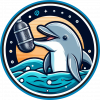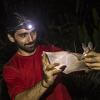Wildlife tracking technologies have already massively advanced our understanding of the natural world, from uncovering previously mysterious migration patterns and key movement corridors to demonstrating the impacts of anthropogenic pressures and climate change. Recent advances in the development of technologies for collecting and transmitting biologging data have unlocked the potential for fine-scale data collection at a near-global scale, which when integrated with remotely sensed environmental data offers an unprecedented biological lens into ecosystem health and environmental change (Jetz et al. 2022).
New technologies on the horizon include small satellites like CubeSats, which are being investigated by NASA, the ICARUS Initiative's satellite system, and a variety of other ventures aiming to improve the coverage, accuracy, and capacity of wildlife tracking data collection. Combined with the increased availability of high-resolution environmental data and analytical developments in movement modeling, these advancements are empowering movement ecologists to ask previously unanswerable or unimaginable questions. It’s clear that this discipline sits at the precipice of major breakthroughs that could revolutionize our understanding of animal movement and the natural world.
- @sfregosi
- | she/her
bioacoustician
- 0 Resources
- 0 Discussions
- 5 Groups
University of Adelaide
- 0 Resources
- 9 Discussions
- 17 Groups
- 0 Resources
- 2 Discussions
- 2 Groups
- 0 Resources
- 0 Discussions
- 8 Groups
I am a recently graduated Computer Scientist and Mathematician passionate about animals and nature.
- 0 Resources
- 0 Discussions
- 11 Groups
The Granollers Museum of Natural Sciences

- 0 Resources
- 2 Discussions
- 2 Groups
Iranian wildlife conservationist Interested in Human dimensions of large mammals specifically carnivores.
- 0 Resources
- 0 Discussions
- 4 Groups
São Paulo State University (UNESP)
- 0 Resources
- 0 Discussions
- 7 Groups
World Wide Fund for Nature/ World Wildlife Fund (WWF)
- 0 Resources
- 2 Discussions
- 9 Groups
- 0 Resources
- 0 Discussions
- 8 Groups
I'm a recent graduate with an applied degree in GIS and am looking to volunteer my time as a GIS tech or analyst. I love all things nature and watching the wildlife in our backyard. I have set up our webcam from time time trying to lure the wildlife for a good image.
- 0 Resources
- 1 Discussions
- 7 Groups
- @fuzzyatelin
- | he/they
American Association for the Advancement of Science (AAAS) & National Geographic Society
Assistant Professor of Anthropology and Biology at Boston University studying non-human primate genomics and evolution.
- 0 Resources
- 0 Discussions
- 6 Groups
Careers
The Smithsonian National Zoo & Conservation Biology Institute is seeking a Program Manager to help coordinate multiple organizations in an effort to integrate movement data & camera trap data with global...
22 April 2024
The Smithsonian National Zoo & Conservation Biology Institute is seeking a Postdoctoral Research Fellow to help us integrate movement data & camera trap data with global conservation policy.
22 April 2024
Article
You’re invited to the WILDLABS Variety Hour, a monthly event that connects you to conservation tech's most exciting projects, research, and ideas. We can't wait to bring you a whole new season of speakers and...
22 March 2024
Hussey Labs seeks a senior post-doctoral researcher/senior research associate for movement ecology of Greenland halibut in the context of fisheries management across Baffin Bay-Davis Strait, Eastern Canadian Arctic.
13 March 2024
Catch up on the conservation tech discussions and events that happened during World Wildlife Day 2024!
7 March 2024
more affordable pricing for our software for the visualization and annotation of GPS and acceleration data
4 March 2024
Careers
Seeking a doctoral student to join the Move.inFormation research group in an exciting new project investigating the use of social information for optimal movement in the Andean condor.
12 February 2024
Research topic: Pathogens and predators represent the ultimate and ubiquitous threats to fitness. One of the defense counter-strategies is behavioural avoidance of the cues of infection risk (disgust) and predation risk...
10 February 2024
The primary focus of the research is to explore how red deer movements, space use, habitat selection and foraging behaviour change during the wolf recolonization process.
10 February 2024
The Wildlife Restoration Foundation is hiring a Conservation Technology Intern
8 February 2024
In the last article of my series examining how people find biologging tech for their projects, I spoke with Annkathrin Sharp, a Programme Officer at Fauna & Flora about how her experience choosing DIY Biologgers to...
14 December 2023
In the penultimate article in my series examining how people find biologging tech for their projects, I spoke with Matthew Stanton about developing custom biologging technology for studying koala behaviour.
7 December 2023
June 2024
event
| Description | Activity | Replies | Groups | Updated |
|---|---|---|---|---|
| Thanks, Thomas! I will definitely look into this more. I like the idea of finding ways to adjust the base plate/attachment point to something more biodegradable/sustainable, so... |
|
Biologging, Marine Conservation | 2 hours 24 minutes ago | |
| I am working on that too haha. So in my design you load the glue gun with two part Loctite, it has two separate metal rings. Glue and hardener in each ring. Then each ring has a... |
+23
|
Biologging | 3 days 3 hours ago | |
| I'll find you some. Just organising all of our stock of these. |
+9
|
Biologging | 6 days 5 hours ago | |
| Hi everyone, @craig joined last month's Variety Hour to chat about Tagranger, which you can read more about here. A TagRanger®... |
|
Biologging, Connectivity, Sensors | 1 week 1 day ago | |
| 'Most importantly, we have to make it play a MIDI version of the DoctorWho theme song when you arm the device. That has to be the #1 feature if you ask me!' Seconded! |
+9
|
Acoustics, Biologging, Emerging Tech, Open Source Solutions, Sensors | 1 week 2 days ago | |
| Might very well be so! I highly encourage you to take up the challenge! |
+23
|
Biologging | 1 week 5 days ago | |
| This is so cool @Mauricio_Akmentins - congrats and look forward to seeing your project evolve! |
|
Acoustics, Biologging, Climate Change, Conservation Tech Training and Education, Data management and processing tools, Emerging Tech, Open Source Solutions, Protected Area Management Tools, Sensors, Software and Mobile Apps | 2 weeks 3 days ago | |
| You mention you're working with an engineer, here are a couple of pointers:with an SDR (the "digital USB receivers" you mention) you can scan some bandwidth to detect radio pulses... |
|
Biologging, Build Your Own Data Logger Community | 2 weeks 6 days ago | |
| Hello everyone, I'm interested in gathering insights on how the behavior of different species impacts the development and efficacy of... |
|
Biologging, Acoustics, Camera Traps, eDNA & Genomics, Emerging Tech, Marine Conservation | 1 month ago | |
| Hello Peter, Have you find a solution ? I will be happy to discuss with you about your project and field challenges ? Best,Virginie |
+26
|
Biologging | 1 month ago | |
| Thank you Carly, I will definitely take a look. |
|
Acoustics, Biologging, Climate Change, Conservation Tech Training and Education, Data management and processing tools, Remote Sensing & GIS, Software and Mobile Apps | 1 month ago | |
| Hi all, I am searching for marine species projects that monitor orientation/IMU and/or acceleration data... |
|
Biologging, Marine Conservation | 1 month 1 week ago |







































